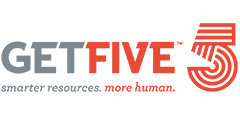Those who don’t learn from history are doomed to repeat it, as the old saying goes. It has certainly proven to be true time and time again. The only problem is, when we’re talking about returning to work after a pandemic, we don’t have much history to rely on for lessons learned and best practices. The last time this country has seen anything similar, it was 1918 and the Spanish flu. The workplace has changed a little bit since then. I doubt anyone then was talking about employees and their feelings about returning to work.
However, we do have a more recent, if not immediate, model for transitioning back to work: Asia. They are, unfortunately, out in front of this. Many cities have already flattened their curves, many have already reopened, workplaces have already seen what works and what doesn’t in terms of employees coming back to their desks. What have they learned? Gartner recently released an article outlining seven important HR lessons companies in Asia have learned about transitioning employees back to the workplace. Because make no mistake, HR will be on the front lines of this effort. And in Asia, HR is saying: Keep it simple, get comfortable with the uncomfortable, and plan for another exit if the virus goes in for round two in the fall. Here is some more advice:
Focus on health and safety. They’re not just talking about wearing masks, taking the temperature of employees as they walk in the door, and disinfecting desks and common work areas religiously. It’s also about social distancing in offices (yet another reason for the demise of open-plan offices), looking into providing alternative transportation to work like a shuttle where people could sit a safe distance apart, and making sure assembly line workers are distanced, too.
Stagger the re-entry. There’s no reason everyone has to swarm back into the office at once. If you have a pandemic plan (now’s a good time to formulate one if you don’t) it will contain information about all of your company’s roles, which are the most essential to be in the office, and which may be able to continue to work at home.
Maintain communication. We don’t have to tell you that communication with employees is in HR’s wheelhouse. Your people will undoubtedly be uneasy. Listen to their concerns, conduct frequent “pulse checks” to see what’s working and what isn’t, and be the liaison between employees and their managers. In other words, do what you always do, only more so now.
The fact is, nobody quite knows how returning to the workplace is going to shake out at this point. All HR can do is be there to help with the transition.









